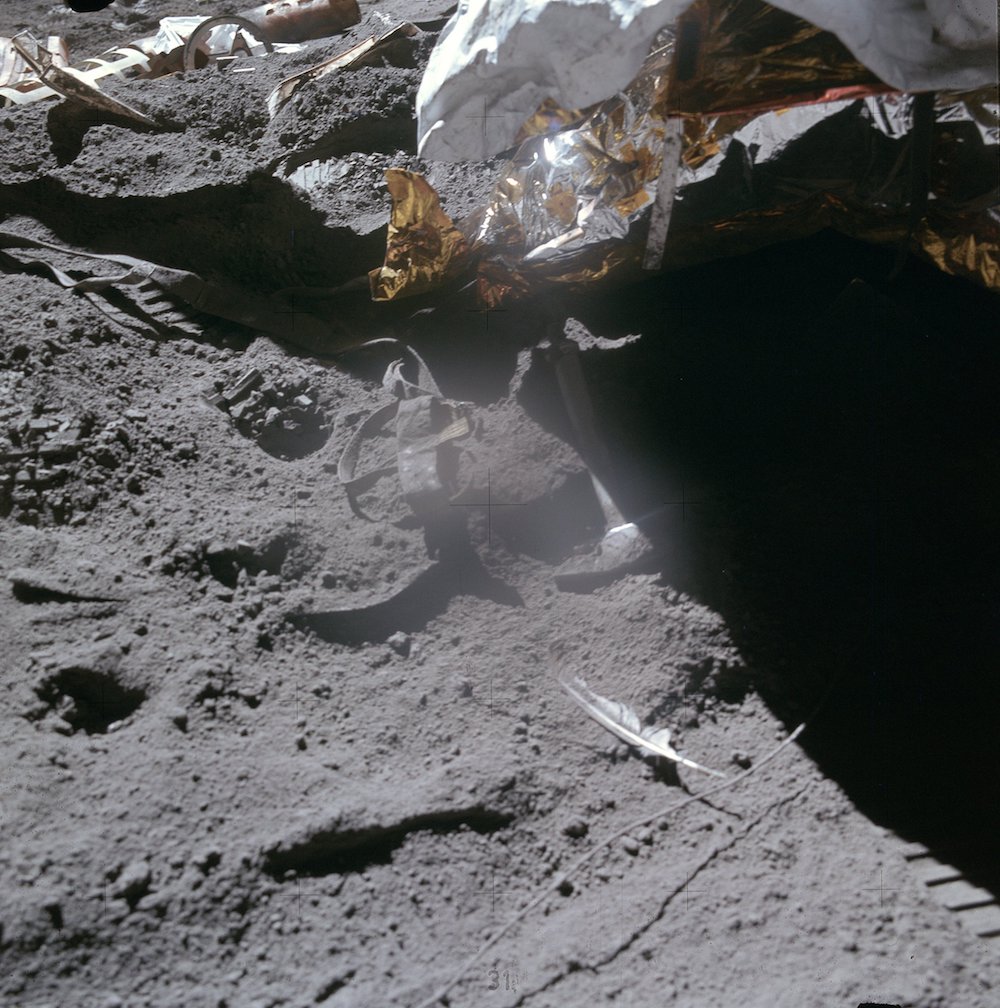
How much trash is on the moon?
Detritus on the moon includes leftover urine-collection kits, an olive branch and tons of robotic equipment.
The moon has a lot of junk on it, including a gold olive branch, a flag kit, several lunar orbiters, and a hammer and a falcon feather — the components of a 1971 experiment used to demonstrate that objects fall at the same rate regardless of mass. Moon-based detritus includes leftover urine-collection kits, an olive branch and tons of robotic equipment from lunar probes.
There are dozens more pieces of lunar debris. But how much garbage, exactly, have humans left or sent to the moon?
It's challenging to say, but the trash on the moon likely weighs upward of 400,000 lbs. (181,000 kilograms) on Earth. This weight is taken from Wikipedia, but it sounds about right considering that quite a few heavy artifacts, such as five moon rangers, are still there, said William Barry, NASA chief historian.
Related: Why doesn't the moon have a name?
Much of this moon litter was left by NASA astronauts who landed on the lunar surface between 1969 and 1972 during the Apollo program. The other rubbish comes from crewless missions from space-exploring agencies, including those from the United States, Russia, Japan, India and Europe, Barry said.
Many of the older pieces are lunar probes that were sent to the moon to learn about it, such as whether spaceships could land on its surface. In the 1960s, some scientists thought that the moon might have a quicksand-like exterior because so many space rocks had pummeled and pulverized it over the years. These robotic probes, which stayed on the moon after their missions ended, showed that this idea was wrong, and that human-made gear could land on the moon's surface, Barry said.
The moon is also home to lunar orbiters that mapped its terrain before they crashed into its surface, adding to the garbage heap.
Sign up for the Live Science daily newsletter now
Get the world’s most fascinating discoveries delivered straight to your inbox.

Other gear in the growing landfill has helped scientists learn about the moon. For instance, the Lunar Crater Observation and Sensing Satellite (LCROSS) was sent to the moon to study the hydrogen there and to confirm the existence of water. Its mission was successful, and LCROSS is still hanging out on the moon's surface, Barry said.
As for the objects left by the Apollo astronauts, there wasn't a lot of thought put into bringing back unneeded equipment, Barry said. Moreover, doing so would have used up precious resources, such as fuel, he added.
"On any engineering project, like landing on the moon, you design the mission to do what you need it to do and not a whole lot more," Barry told Live Science. "The real concern was: Can we get the crew safely to the moon, can they get the samples they need and can we get them back in one piece?"
But, as the saying goes — one person's trash is another's treasure. Although many people might call the odds and ends humans have left on the moon "garbage" (what else would you call a used urine-collection assembly?), NASA takes a kinder view.
Researchers can study these objects to see how their materials weathered the radiation and vacuum of space over time, Barry said. Moreover, some of the objects on the moon are still being used, including a laser-range reflector left by the Apollo 11 crew.
Researchers on Earth can ping this reflector with lasers, which allows them to measure the distance between Earth and the moon, according to NASA. These experiments helped scientists realize that the moon is moving away from the Earth at a rate of 1.5 inches (3.8 centimeters) a year, NASA reported.
The so-called trash left on the moon also has archaeological merit, Barry said. Future lunar visitors may want to view the old Apollo sites and see gear from NASA, the European Space Agency, the Russian space agency Roscosmos and other countries, Barry said.
You can find a full list of the abandoned objects on the moon here. However, the list hasn't been updated since 2012, Barry noted, and is missing more recent objects, such as Ebb and Flow, two NASA lunar probes that helped researchers analyze the moon's gravitational field.
Originally published on Live Science.

Laura is the archaeology and Life's Little Mysteries editor at Live Science. She also reports on general science, including paleontology. Her work has appeared in The New York Times, Scholastic, Popular Science and Spectrum, a site on autism research. She has won multiple awards from the Society of Professional Journalists and the Washington Newspaper Publishers Association for her reporting at a weekly newspaper near Seattle. Laura holds a bachelor's degree in English literature and psychology from Washington University in St. Louis and a master's degree in science writing from NYU.









